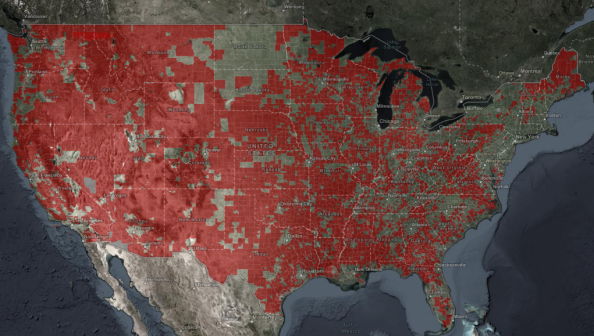Regional internet providers ask feds to ease BEAD grant requirements

A group of regional broadband providers sent a letter to federal officials Wednesday requesting an adjustment to the steep financial requirements to be eligible for projects funded by the $42.5 billion Broadband, Equity, Accessibility and Deployment grant program.
In a letter addressed to Commerce Secretary Gina Raimondo and Alan Davidson, head of the National Telecommunications and Information Administration, which is administering the BEAD program, the companies warned that current requirements could force them to “divert funds from ongoing network deployment or not participate in the BEAD program at all.”
The companies — Brightspeed, Consolidated Communications, Altafiber, Altice, Windstream and Ziply Fiber — asked for alternatives to a current BEAD requirement that they obtain a 25% irrevocable letter of credit for grants, the latter only being awarded as reimbursements to the companies after projects are completed. With some exceptions, the BEAD program also requires a 25% match, which can be paid by a local government, utility provider, nonprofit or other non-federal organization.
“We understand and are sympathetic to the goals of ensuring that an [internet service provider] is both financially able to build the promised networks and that the government can recoup its investment in the event of a default,” the letter reads. “However, the NTIA’s requirements go far beyond any other federal or state broadband funding program.”
The Federal Communications Commission’s $20 billion Rural Digital Opportunity Fund, by comparison, which provides companies with up-front grant funding, required letters of credit totaling 10% of one-year funding amounts.
The companies proposed several alternative requirements that would “encourage broader participation by financially capable ISPs of all sizes,” including reducing the letter-of-credit amount to 5%, only requiring the letter of credit after grant funding is dispersed and retiring letters of credit after grant compliance is certified. They also suggested alternative mechanisms to protect financing, such as surety bonds, certification of good standing and parent guarantees.
Neither Commerce or NTIA officials could be reached for comment Wednesday.
When the issue of the 25% letter of intent was raised at a public event last month, Davidson said “it’s a really important issue.”
“We are trying to do two things here. One is to make sure NTIA is spending the money wisely. $42 billion sounds like a lot of money, but if we are going to connect everybody, we have to spend every penny wisely,” Davidson said at a broadband event hosted by Axios on Sept. 27. “That means making sure that the people who are getting this money — the network providers — can actually do the job they say they are going to do. That’s where this letter of credit comes in. The other thing we are trying to do at the same time is make sure we are inclusive in the program and get a broad set of providers, both the large and the small.”
The Biden administration announced BEAD funding allocations this past June. Texas received the most — more than $3.3 billion, followed by California at $1.9 billion and Missouri at $1.7 billion. Nineteen states were each awarded more than $1 billion.
Funding was largely informed by the FCC’s broadband coverage map, which highlights the millions of locations that remain without access.





